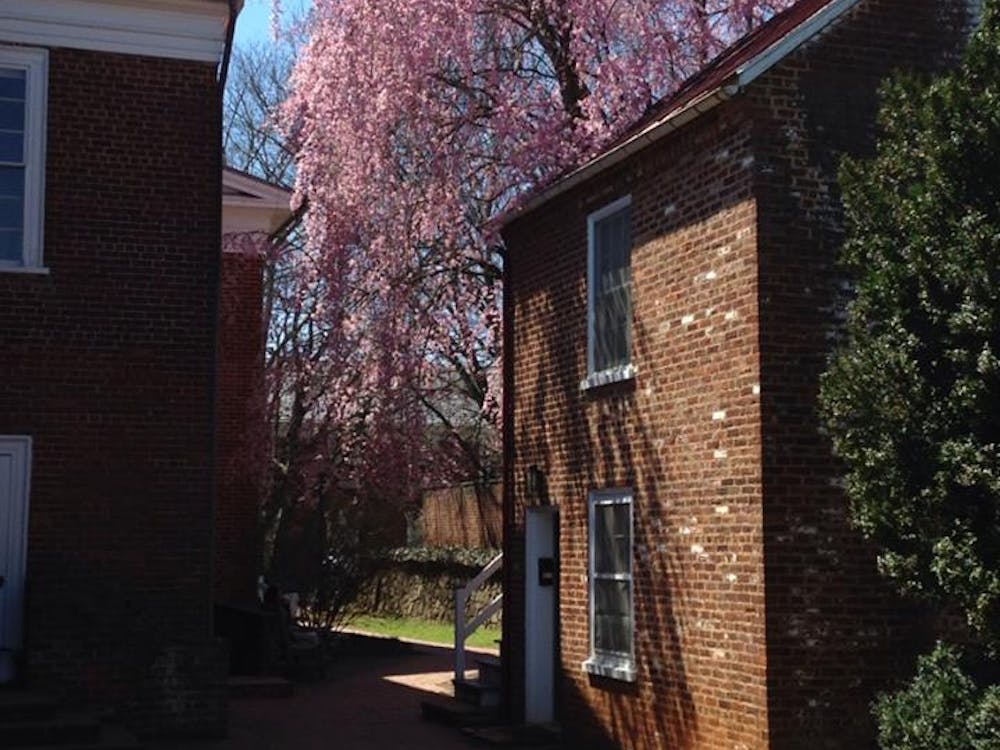MORE than a century after America abolished what was euphemistically known as "the peculiar institution," our elite colleges and universities have created some peculiar institutions of their own. This past Saturday, the University held its annual Fall Fling recruitment for prospective African-American students, where, not surprisingly, one parent remarked to this writer, "I see very few white people here."
What kinds of messages do racially-targeted programs like Fall Fling send to students? According to Valerie Gregory, Associate Dean of the admissions office's minority outreach effort, such presentations are intended to provide a "comfort level" to minority students. "The families want to know the students are the going to be safe here -- are they going to encounter the racial atmosphere that's out there," Gregory explained.
Gregory also objected at the characterization of Fall Fling as "racially separate," noting that an afternoon academic session was "integrated" in the sense that not all faculty presenters were black. One hesitates to ask how she would characterize the morning session, which obviously was not as "integrated." The point is, despite these programs' best intentions, their effect may be to plant or to reinforce seeds of racial separation that persist throughout students' college careers.
Of the prospective students and parents interviewed at random before Saturday's event, none expressed any particular concerns about race. Admittedly, the small sample was not scientifically representative of all the participants. Still, their racially neutral responses suggest that the University's insistence on holding racially separate recruitment events may be gratuitous.
Notwithstanding the recent publicity about race relations at the University, all of the students I spoke with had the same expectations that students of any other racial background would have of a college recruitment presentation -- they simply wanted to know more about the University in general. In fact, the only person who suggested any caveats about the issue of race was Dean M. Rick Turner of the Office of African American Affairs (OAAA).
When asked about particular concerns he had as an African-American student with the University, Ian Redd, a high-school senior from Martinville, was hard-pressed. He finally offered, "it's 75 percent white." (According to University statistics, the figure is actually 69.7 percent.)
Jasmine McKeiver, a high-school junior from Newport News, was similarly unconcerned about the issue of race. "I came here to find out more about the University and to see what the atmosphere is like," she said.
Sam Feemster, II, a high-school senior from Ashburn, noted, "I've heard [the University] is pretty diverse -- that there's a good mix of different cultures."
In contrast, Turner ominously warned parents, "You cannot leave your children at a predominantly white college [without programs like the OAAA], otherwise you'll see results you don't want to see."
Turner declined two requests for comment on what concerns he thought African-American applicants had in particular. Given that, one can only guess at what unwanted results he was referring to. Still, despite the overtly racial aspect of the day's event, for at least some students and parents in attendance, race was not their predominant concern prior to coming. Considering the tenuous state of campus race relations today, one cannot help but think that part of the blame might begin with racially separate recruitment programs, which then lead to separate mentoring and academic support programs, and not surprisingly, to separate social organizations as well.
Sam Feemster, Feemster's father, said, "I want to know [my son is] going to be treated well instead of treated special." Whether the University's racially separate institutions constitute "special" treatment, at the end of the day, they all treat racial minorities differently. When our country continues to struggle to treat minorities equally, their disparate treatment in academia seems irreconcilably at odds with racial progress.
Given that many students applying for college do not feel any particular angst about being racial minorities in the first place, it defies common sense for proponents of race-based recruitment and campus support groups to claim that these programs ease the transition process for their students. If anything, these programs may actually undermine self-confidence and exacerbate any underlying racial tensions.
If administrators for once were only willing to abandon their peculiar institutions of social engineering, perhaps they might see students interact on their own with those of other races. At the very least, things could not be any worse than they are now.
(Eric Wang is a Cavalier Daily viewpoint writer.)






